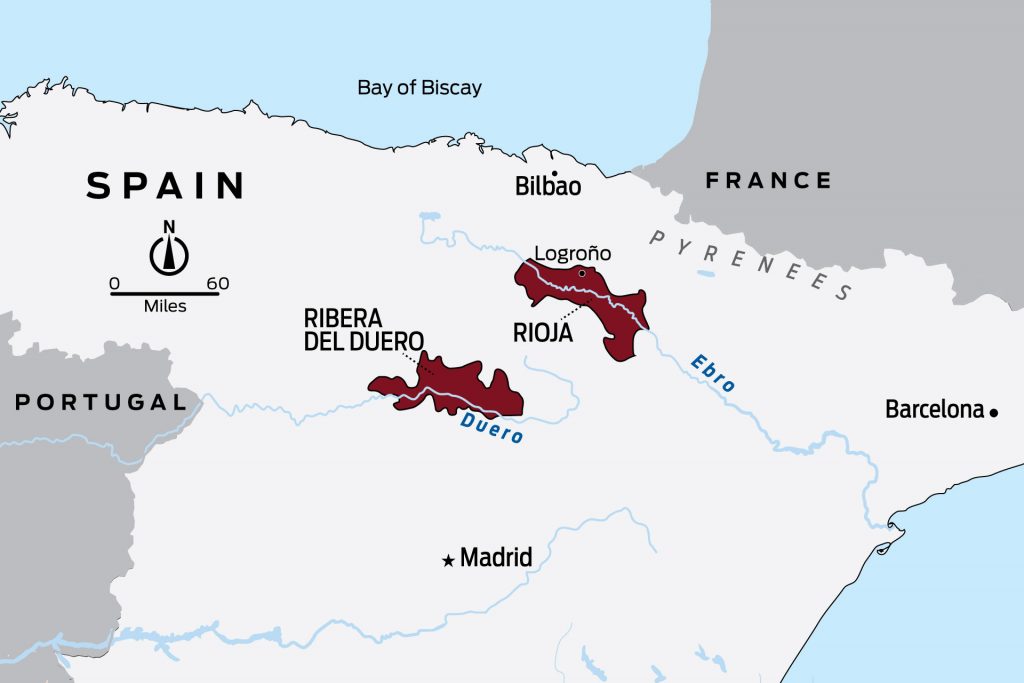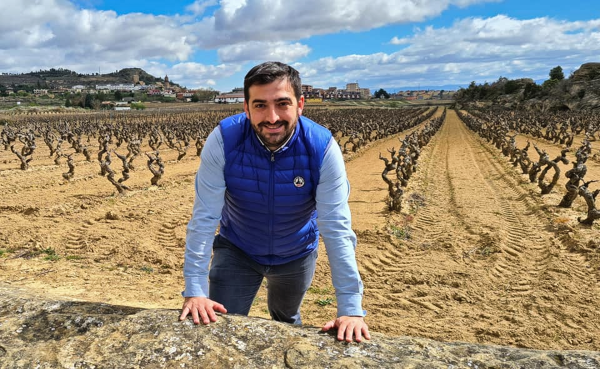As the 2017 growing season draws to a close in Europe we can start to draw a line under 2017. How is it going to stack up compared to other recent vintages? "Vintage" in the wine world is a term used to describe the time of harvest for grapes. With a handful of exceptions for grapes grown in the tropics this happens just once a year, in Autumn where the grapes reach the ideal level of ripeness for picking. After harvest comes the sorting of the fruit, crushing, fermenting and aging before the wine is bottled and ready for release. The year on the bottle denotes the year of the harvest, rather than the year of bottling. The same vintage of different wines are released at different times depending on how long they spend maturing in tank, barrel, or bottle before ready to reach the hands, cellars, and bellies of the consumer. A fresh young Sav might be ready just six months after picking, whereas a barrel-aged Chardonnay may not be released for another year or more.
One of the joys and heartaches of the wine world is the difference between each year. The conditions over the growing season will determine the character of the wine. Was there frost early on? Was it overly windy during the flowering season, was it warm or cool over summer? Was it dry or wet, in particular in the last few weeks before harvest? Were there disease pressures and rot? A freak hail storm at the tail end of the season? Perhaps a long 'Indian Summer' that allowed fruit to stay out on the vine longer than usual. Perhaps there were bad storms forecast that forced growers to pick earlier than ideal.

So perhaps we start on home turf. 2017 vintage in New Zealand by in large will go down as one of the most "challenging" seasons for growers. This is a code word used in the industry to denote bad weather conditions, and when you hear growers talk about a 'very challenging' season we have reason to worry about what standard the wine is going to be. As the proverb goes, you can't make a silk purse out of a sow's ear, and with poor quality fruit there is only so much that a winemaker can do to rescue the vintage.
Those of us in Wellington will remember this last summer as one of the cooler and definitely one of the wettest in recent memory. It wasn't just us either, most of New Zealand will decry 2017 as one of the most "challenging" years (aka- utter crap for many). Hawkes Bay was looking good up until 2 weeks before harvest when the rains came & didn't stop. Marlborough was beset with mildew and rot. When the picking happens it needs to be done in a hurry, which is particularly hard if picking selected fruit carefully by hand. One trained picker can bring in about a ton of fruit. One picking machine by comparison can deliver 200 tons in the same time. (photo- a grape picker in France this year).

In cold wet years the fruit doesn't reach a decent sugar level to get a decent ferment and reasonable alcohol levels, and one of the running jokes this year is that it would be a bumper profit year for the Chelsea Sugar factory, with 'chapitalisation' rife among growers needing to add sugar to the must in order to make decent wine. With high rain means plumper berries too, meaning potentially diluted concentration. Don McConachy from Devotus wines in Martinborough says the bad vintages reward the diligent growers, those who did the hard work over the year in the vineyard will get much better results in the bottle. Particularly those who hand tend their plots vine by vine. Don 'dry farms' his established ex-Dry River vines, meaning no irrigation. It's all organic too, with great care going into the long term health of the vines. Healthier vines perform better in 'challenging conditions', and the top producers generally still make good wines in bad years.
So how about in the Northern Hemisphere? Early days of picking are underway in Europe, and it will be a vintage to remember for the best and worst reasons. They say the size of a vintage is determined in Spring, and the quality in Autumn. Spring 2017 in much of France and Italy were met with a succession of savage frosts - destroying delicate fruit buds and even killing some exposed vines entirely. With climate change the weather extremes seem to happen more frequently. Bordeaux was hit particularly badly this year, with yields this year expected to be down by 50%. This isn't evenly spread across the region, some growers were almost completely unscathed especially in the South and West, and others especially on the Right Bank like Entre Deux Mers and St Emilion losing virtually their entire crop. Jonathan Ducourt in Bordeaux is somewhat sanguine about it, you take what nature gives you, the good and the bad. Ducourt has suffered losses of 95% this year. They still have wine to sell, but it might be a different story in a year or two when the 2017's would normally be released. (photo from frost damaged Ducourt vineyards in Bordeaux)

Frost in Chablis (again), parts of Burgundy and Languedoc mean low yields, Alsace down by 30% with Gewurztraminer particularly badly hit. The Loire is down 10-40%, though Champagne lovers can breath easier, with a higher yield on last year's low crop, but still 9% down on the 5-year average. As a whole, French wine production will be down by some 17% - thats the equivalent of a staggering 900 million bottles of wine lost. Similar numbers are hitting the Italians. (photo of frost damaged grape berries)

The good news is that an unseasonably hot summer broke temperature records again this year, meaning an early harvest and excellent quality fruit. That will put pressure on prices- less wine but of good quality puts asture wine lovers into a buying frenzy... particularly for the top wines. We'll watch with great interest what happens here, though we've already seen a 20% price hike this month from our Burgundy producers Olivier Leflaive, after another price hike just 6 months earlier!
The first 2017 season wines from New Zealand are starting to release now- starting with the Sauvignon Blancs and Rose wines. It's a bit early to make definitive conclusions just yet, but we're expecting the wines on average in NZ to be below average in quality. A bit thin, short on texture and flavour. The reds will be the most telling, especially those grape varieties that ripen late like Cabernet Sauvignon. The last time we experienced a dreadful year was 2012, and top producers like Te Mata didn't even make their flagship wine like Coleraine in that vintage. They will carefully analyse the contents of their barrels as they mature, and we'll find out in a couple of years the final result.
The vines go to sleep over winter, and after pruning the viticulturalist has a well earned break - awaiting spring for the cycle to begin again. And as the the European growing season draws to a close, ours starts up again. This last week Don at Devotus saw the first buds burst in Martinborough, the easily damaged first growth on the battle hardened vines. What will the 'vintage' of 2018 deliver?? (photo- bud burst at Devotus)



